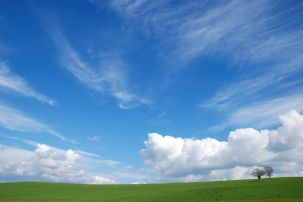Lesson summary
In this activity students look at how the climate in Australia and around the world has changed over time by creating a climate change timeline. Students work in three groups; one groups looks at historical changes to climate; another group looks at predicted future changes; and the third group creates the timeline and a class wide glossary on the topic.
Learning intentions:
Students will...
- understand that the Earth’s climate has always been changing
- understand that changes in climate affect different parts of the world in different ways, and can have a big impact on the life that exists there
- recognise that changes in the Earth’s climate have been dramatic since the Industrial Revolution
- understand that science is used to tell us about our past and to make predictions about our future.
Lesson guides and printables
Curriculum links
Select your curriculum from the options below.
Lesson details
Curriculum mapping
Australian curriculum content descriptions:
Year 10 Science:
- Global systems, including the carbon cycle, rely on interactions involving the biosphere, lithosphere, hydrosphere and atmosphere (ACSSU189)
- People can use scientific knowledge to evaluate whether they should accept claims, explanations or predictions (ACSHE194)
- Scientific understanding, including models and theories, are contestable and are refined over time through a process of review by the scientific community (ACSHE191)
- Use knowledge of scientific concepts to draw conclusions that are consistent with evidence (ACSIS204)
- Critically analyse the validity of information in secondary sources and evaluate the approaches used to solve problems (ACSIS206)
- Communicate scientific ideas and information for a particular purpose, including constructing evidence-based arguments and using appropriate scientific language, conventions and representations (ACSIS208)
Syllabus outcomes: SC5-12ES, SC5-13ES, SC5-7WS, SC5-8WS, SC5-9WS.
Time required: 48 mins
Level of teacher scaffolding: Low – oversee activity
Resources required
- Internet access
- Student worksheet
- Materials for creating timeline (paper, cardboard, pens/pencils, sticky tape)
Additional info
This is an original Cool.org lesson. Facts and figures in these lessons may have changed since this lesson was published. We always endeavour to update our resources in a timely manner, but if you see an error or issue in our resources please get in touch with us.


Welcome back!
Don't have an account yet?
Log in with:
Create your free Cool.org account.
Many of our resources are free, with an option to upgrade to Cool+ for premium content.
Already have an account?
Sign up with:
By signing up you accept Cool.org's Terms and Conditions(Opens in new tab) and Privacy Policy(Opens in new tab).